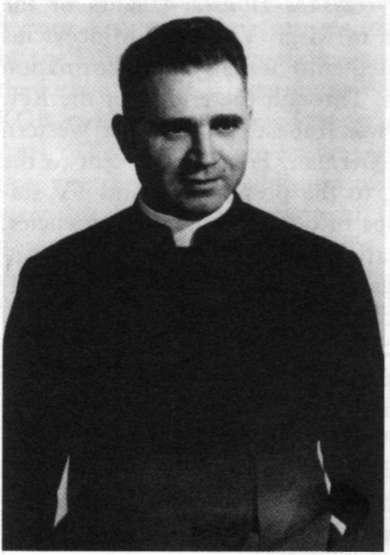As was mentioned earlier, at the end of the 1960s (1968-1970) diligent priests began writing declarations to Church and civil authorities demanding liberties for the Church and believers. The first priests to attract the KGB's attention were those who submitted or sent declarations as well as those who gathered the signatures of their colleagues. The priests of the Vilkaviškis diocese Sigitas Tamkevičius, Juozas Zdebskis, Pranas Račiūnas, Alfonsas Svarinskas, Petras Dumbliauskas, Lionginas Kunevičius, and Gvidonas Dovidaitis comprised one of the most active groups. The KGB wanted to find out who were the organizers and authors of these declarations and how the documents managed to reach Western countries. For this purpose the KGB used the agents it had among the priests, especially those working in the offices of dioceses. With the appearance of a new declaration all the agents who had possible access to the information were called to action.1 Other operative measures were also employed.
In 1969 the representative of the Council for Religious Affairs deprived Tamkevičius and Zdebskis of their priest registration certificates because of their active priest activities and refusal to obey Soviet prohibitions (by catechizing children, collecting signatures for collective priest declarations). In 1970 after their certificates were returned, Zdebskis became the vicar in Prienai while Tamkevičius was appointed to Simnas, but the two priests continued to maintain relations. In 1971 secret listening equipment was installed in Zdebskis's apartment. The KGB more than once recorded parts of the conversations between Zdebskis and Tamkevičius who sometimes visited Zdebskis (they were very cautious and avoided talking loudly on important issues) from which the KGB surmised that materials were being gathered for some publication.2 This increased the suspicions of the KGB who devoted even greater attention to the priests.
-------------
1 LYA. F. K-l, C. d. 45, f. 500, sh. 96, 100, 105, 119, 124.
2 ibid. F. 501, sh. 51-76.
Because underground publications in the 1970s were not limited to only religious literature (catechisms, prayer-books) but also included philosophical works from a Christian point of view, the first persons to receive attention from the KGB were the publishers of this sort of literature: Petras Plumpa, Povilas Petronis, Jonas Stašaitis, and Juozas Zdebskis.3 After the appearance of the LKB Kronika (henceforth simply Kronika), many publishers of underground religious literature also became involved in its issuance. The publishing equipment, experience, and contacts which these people possessed comprised the material and organizational basis for publishing the Kronika.
As Archbishop Tamkevičius noted in his recollections, in the first years of its issuance Petras Plumpa (up to his arrest on 20 November 1973) was his irreplaceable assistant.4 The relations of these people with Moscow dissidents were helpful in establishing the Kronika's first bridges to the West.
After the first issue of Kronika was published, during a search in the flat of the medicine institute administrator and nun Gema Jadvyga Stanelytė in Kaunas on 23 June 1972 the KGB found the first issue of the Kronika (as well as its translation into Russian). On 5 July 1972 Prosecutor General of the Lithuanian SSR (LSSR) Alfonsas Kairelis signed a decision for starting criminal case No. 345 on the Kronika and charged the KGB with carrying out a preliminary investigation.5
On 11 August 1972 "The Plan for Interrogation Acts and Secret Service and Strategic Measures for Criminal Case No. 345," prepared by the Fifth and Investigation divisions and Kaunas City Department of the Lithuanian KGB, was approved.6 As one can learn from the plan, the KGB had already gathered some information regarding the Kronika in April. This information, however, was still chaotic and the main attention was directed at publishers of underground religious literature who were not directly connected with the Kronika. Among the people to be observed were Petronis, Stasaitis, the priests Jonas Lauriūnas, Juozas Zdebskis, Prosperas Bubnys, Antanas Šeškevicius, the Sisters Antanina Pošiūnaite, Jadvyga Stanelytė, Nijole Cicėnaitė, Julija Kuodytė as well as many other people who had incidentally attracted their attention. The real editor of the Kronika Tamkevičius is not yet mentioned. The last (34th) point of the plan includes the measure: after learning the identities of the publishers of the Kronika and their assistants, carry out searches in their homes at the same time, question them and decide whether or not to bring criminal charges against them.7
-------------
3 ibid. Sh. 2-8. Plan of secret service-strategic measures. 17 May 1971.
4 Archbishop Tamkevičius. LKB Kronika. Volume XI. 1997, pp. 348-349.
5 LYA. Criminal Case No. 47706/3. Volume 4, sh. 11.
6 ibid. F.K-1, C. d. 8, f. 201, sh. 89-103.
7 ibid. Sh. 102-103.
The appearance of the Kronika attracted the attention of the highest authorities of Soviet Lithuania: at the 11th plenum of the Central Committee of the Lithuanian Communist Party [CC LCP] (on 22 November 1972) after noting that the clergy had recently become more active and tried to influence the youth, Second Secretary Valerii Kharazov informed the plenum's participants that "together with nationalistic elements they (the clergy - author) had started publishing the slanderous publication Lietuvos Kataliku Bažnyčios kronika (The Chronicle of the Catholic Church in Lithuania)."8
From its first to last issue the Kronika was sent to the West. The first issue reached the newspaper Draugas (Friend) published by Lithuanians in the United States three months after its appearance in Lithuania.
Through the efforts of U.S. resident Rev. Kazimieras Pugevičius 1,000 copies of the Kronika were printed and sent to Lithuanian communities in the U.S.A., Canada, Europe, England, South America, and Australia. The Lithuanian Catholic Religious Aid Auxiliary, which was established in the U.S., began publishing the Kronika in multi-issue volumes from 1974. The information from the Kronika was published not only in Draugas, but also in other Lithuanian newspapers in the free world: Darbininkas (Worker), Teviškės žiburiai (Lights of the Homeland), etc. Through the efforts of Msgr. Vincentas Mincevičius (in Rome) the Kronika was translated into Italian and information from it was presented to the Vatican. Through the efforts of the Rev. Kazimieras Kuzminskas the Kronika was translated into other Western languages, such as English, Spanish, German, French, and sent to the libraries of colleges and universities, to the press, radio and TV stations, to Catholic bishops and bishops of other faiths, news agencies, various institutes, influential organizations, officials, parliament deputies, diplomats, and international organizations. Vatican Radio broadcast news items from the Kronika. Moreover, every month the Lithuanian language broadcast service of Vatican Radio (chief editor -Msgr. Vytautas Kazlauskas) distributed the Elta-Press bulletin prepared by Mincevičius with an Italian language translation of the latest issue of Kronika to the Central office of Vatican Radio as well as its more than 30 editorial offices of other languages. This information was broadcast not only on Vatican Radio but also on other radio stations, such as Voice of America, BBC, Radio Free Europe, Radio Liberty, Nemeckaja volna, and Radio Svoboda.9
---------------
8 LYA. LKP DS. F. 1771, C. d. 248, f. 15, sh. 15-17.
9 Vidas Spengla, Lietuvos Kataliku Bažnyčios Kronika. XI, pp. 56-68, 182-184.
of the Kronika in the world
Rev. Kazimieras Pugevičius
Rev. Kazimieras Kuzminskas
Msgr. Vincentas Mincevičius
Msgr. Vytautas Kazlauskas
Due to the efforts of Lithuanians living abroad, the voice of the Kronika spread widely not only in the free world but also reached the people living behind the Iron Curtain through radio broadcasts. The restrictions of religious freedom and on all the people in the USSR as well as the persecution and repression against fighters for this liberty became known. This was a very damaging thing not only for the internal policy but also for the foreign policy of the USSR. If the decision of the first criminal case (No. 345) concerning the Kronika mentioned only the "malicious distortions lowering the dignity of the Soviet state and social order"10 its political danger was later (in 1978) perceived much more seriously. On 28 February 1978 in report No. 5/2654 Lithuanian KGB Chairman Juozas Petkevičius wrote: "The Chronicle of the Catholic Church in Lithuania does great political damage to our country. After being sent abroad our enemy uses this material widely in provocative radio programs against the republic and in organizing anti-Soviet slanderous campaigns against the USSR. Therefore, the halting of the publication and distribution of inimical publications is one of the most important tasks of all security authorities in the republic."11
The main aim of observing the Kronika was to find its publishers, to repress them and to stop its publication. The second, so called alibi, aim was to at least discover the channels through which the publication was sent to the West and to sever them. The broadcasting of information from the Kronika only in Lithuania was not as dangerous for Soviet policy as was its dissemination in the free world. The disclosure of the true policies of the USSR lowered its prestige and weakened its influence in the world. This was the essential danger of the Kronika.
The Main Directions of Observation
In order to track down the organizers and publishers of the Kronika, the KGB diligently examined every copy they obtained, followed every person who copied or distributed it, tried to figure out who was the supplier of the published information so as to learn who were the organizers of the publication and its editors.
There were two main ways how the Kronika got into the hands of the KGB: agents-deliverers and searches in the homes of suspected publishing assistants. Other instances, such as copies accidentally found by people and given to the KGB or copies taken from tourists returning to the West, were very rare. The main suppliers of the Kronika to the KGB were agents fulfilling their tasks, i.e. to get a new copy of the Kronika and deliver it to the KGB. If an agent had to return the copy to the person from whom he had acquired it, the KGB would photograph it
---------------
10 LYA. Criminal case No. 47706/3. V. 4, sh. 11.
11 ibid. F. K-l. C. d. 8, f. 210, sh. 200-201.
and return it to the person (so that the agent would not give himself away). When there was no need to return the copy, the KGB, nevertheless, retained it. From the 126 copies of the Kronika found in the repositories of the KGB more than 80 were given by agents. There were even 4-5 different copies of some issues, indicating that the Kronika was copied not in one but in many different places.
The KGB examined thoroughly the copies it received. A note was first attached to every copy indicating when and what agent had delivered it, as well as to which KGB division or subdivision the agent belonged and from whom the copy had been acquired. If a copy had to be returned to an agent, the KGB operation technical section first analyzed the copy searching for any traces of the so called 'MT' substance. (The KGB began to treat carbon-paper with a chemical substance which was given the code name 'MT'. Later they also treated paper with the same substance, and tried through their agents to give this treated paper to people who were suspected of being involved in the publication of the Kronika). When the KGB found traces of the 'MT' substance in an acquired copy, they knew the source of the printing. After detecting the printing sources they only had to establish which of them was the first, believing that the place where the initial copies were printed would help them find the editors.
As can be seen from the notes attached to the issues, many agents were, in fact, constant suppliers often receiving different issues of the Kronika from the same person. By tracking such a person, the KGB could effectively follow that person and find out where he/she had obtained the copy and thus draw closer to the primary source - the editorial office.
It was more difficult to do this with issues of the Kronika confiscated during a search. The records of interrogations indicate that the publishing assistants and distributors of the Kronika knew how to react to questioning: they would say that they had found the publication in their post-boxes or that some unfamiliar woman had given it to them in the church and so on. The chain was thus broken.
The distributors of the Kronika knew that if copying equipment and copies were found in their premises they could not escape responsibility. Nevertheless, even then the search for the initial source of the Kronika would usually be broken off, the real client was not betrayed.
Another matter which interested the KGB was the source of the information published in the Kronika. The KGB would check some of the facts mentioned in the Kronika. The official purpose of the checking was to establish if such an event had really taken place. A copy of the Kronika item was sent to the KGB city department or district subdivision where the event described in the Kronika had taken place and the KGB authorities were asked to check the objectivity of the described event. Local KGB officers (and sometimes KGB officers from Vilnius) invited the people mentioned in the item and officially interrogated them. It can be seen from the interrogation records, though, that the officers had an obvious tendency to question the witnesses in such a manner that they would testify that the account was untrue and slanderous. Later these records were used to start criminal cases against the assistants of the Kronika and served as proof that by assisting the Kronika they "slandered the Soviet state and social order". The information, broadcast by foreign radio stations, was examined especially thoroughly. Using this evidence, the KGB asserted that Western radio stations were conducting anti-Soviet slanderous propaganda. The instructions to verify the validity of facts always included the demand to find out who had supplied the information to the Kronika.12 This demand, however, was usually not fulfilled because the described event was usually known to more than one person and it was impossible to establish who had supplied the information. Understandably, the security bodies tried to track down the informer because this might help them find the editorial office.
It was just as important to track down the channels through which the Kronika was sent to the West and to block them. These channels were most often established through Moscow. In the beginning Tamkevičius, Zdebskis, Plumpa, and others gave the Kronika to Moscow dissidents. Later, the number of couriers increased. At the end of 1974 after the arrests and interrogations of Sergei Kovalev and later Gleb Yakunin, Tatyana Velikanova, Viktor Kapitanchyuk, Lev Regelson, Dmitrii Dudko, the KGB learned about some of the channels but was unable to sever them because replacements were found for those arrested. (For example, the wife and son of Kovalev replaced him). It should be noted that none of the arrested publishers of the Kronika disclosed these channels.
Later more tourists from Western countries visited the USSR and Lithuania. Often tourists from the U.S. took the Kronika in microfilms home as a souvenir.
Lithuanian Sisters of the Immaculate Conception of the Blessed Virgin Mary from Putnam (U.S.A) were involved in this operation several times. As Archbishop Tamkevičius testified, when visiting the U.S. in the archive where issues of the Kronika were stored he saw not only the issues which he had sent but also issues sent by somebody else. In other words, the publishers of the Kronika were not the only people who were interested in sending copies to the West.13 The KGB watched very closely the tourists who came to Lithuania, and sometimes managed with the assistance of customs officials to search a tourist and confiscate a copy of the Kronika. The KGB acquired issues Nos. 12, 13, and 14 this way. When this method was not successful, the issues of the Kronika reached the West in other ways.
-------------
12 LYA. Criminal case No. P-14308-LI. V. 3, sh. 41-139.
13 Archbishop Tamkevičius. Opus quotation, p. 336.
Methods and Measures of Spying on the Kronika
The same institution - the KGB - observed the Kronika and organized the fight against it. The plans of the secret service-strategic measures provided not only for revealing its publishers and organizers but also for stopping its issuance or at least diminishing its influence.
Because the former KGB archive no longer holds the strategic cases against the Kronika and its publishers (except for strategic investigation case No. 242 involving Zdebskis), the methods for spying and the measures used in the fight can only be reconstructed with the help of this case and the remaining strategic and criminal material found in some other KGB divisions (but not the Fifth Service which dealt with this job directly because it succeeded in erasing its footsteps completely).
We can learn from the case against Zdebskis that group strategic investigation cases (DGOR in Russian), such as 'Izdateli', 'Mrakobesi', 'Fanatichki', and others, were established against the publishers of underground religious literature. At first, the publishers of the Kronika were included among the publishers of such religious literature. A separate case was begun for every person more or less seriously suspected of being involved in such publishing activities. Tamkevičius had the pseudonym 'Tomov', the editor of Aušra Lionginas Kunevičius - 'Mistik', Svarinskas - 'Neispravymij', Zdebskis - 'Naglets', Plumpa - 'Chameleon', Stašaitis - 'Seminarian', Vaičiūnas - 'Fanatic' and so on. In other words, special investigative cases were begun against all of them. It is known that the group DOR case No. 22 under the name 'Pautina' (Web) included the main suspected publishers of the Kronika and the members of the Catholic Committee for the Defense of the Rights of Believers (TTGKK).14 It can be seen from the investigation case against Zdebskis that every year a plan of secret service-strategic measures was made against him (and possibly for other suspected publishers of the Kronika who were in the strategic list). Initially, depending on what the watched person was suspected, a list of the measures which would help disclose his criminal activity was prepared. These plans were made by the KGB division or subdivision of the area in which the watched person lived and confirmed by section 3 (which was dealing with spying on clergy) of the Fifth Service of the Lithuanian KGB.15
The second source, which helps explain the methods used to watch the persons suspected of being involved in publishing the Kronika and
--------------------
14 LYA. F. K-l, C. d. 45, f. 499, sh. 4-7.
15 ibid. F. 500. sh. 24, 74-77; f. 501. sh. 2-8, 111-115; f. 502. sh. 11-14.
to fight against them, is the plans of the investigative actions and secret service-strategic measures used to 'investigate' specific persons before their arrest or immediately afterwards. The latter plans were made by the Fifth Service of the KGB of the LSSR together with the interrogation department and approved by the KGB chief or his deputy.16 The analysis of these plans helps one to understand better the methods and measures used to watching and combat the Kronika.
Agents. At first agents were collected to help in spying. The plan of secret service-strategic measures mentioned the agents (using pseudonyms) assigned to inform about a watched person. The KGB was interested in any information concerning the suspected publishers of the Kronika; where and when do they travel, who and when visits them, with whom do they maintain close relations (who are their 'contacts'), do they distribute the Kronika or keep a copy of it, etc. The KGB was especially interested in the typewriters which the watched people had. Agents were ordered to ascertain their brand, number and to obtain an example of their type.17 Upon acquiring a new issue of the Kronika, the KGB would first ascertain if it was typed with one of the typewriters held by suspects. Then, they would investigate whether the new issue of the Kronika was printed with a typewriter, whose type they had registered earlier. If the Kronika was typed with this typewriter for the first time, they made an expert analysis of its type and added the typewriter to the strategic list. This work was done by the strategic technical department (OTO in Russian) of the KGB and sometimes (during the investigations of criminal cases) by court experts. A register was made of which issues of the Kronika (and Aušra) were typed with the same typewriter. For example, one of the notes attached to an issue of the Kronika states that issues Nos. 36, 66, 67, 68, and 69 were typed with the same typewriter. These issues were brought to KGB by agents 'Petras', 'Žilvinas', and 'Arvydas' from Kaunas.18 The same procedure was followed in regard to issues copied electrographically: they were sent to town or district subdivisions of the KGB with the order to discover whether there were any Eros apparatus in their territory with such (given) typical typing signs.19
The KGB tried to use the information about the source of issues and the typewriters used to print them, along with other secret service and strategic means, such as spies, semi-agents, secret microphones, external observations, secret searches, to help disclose the channels used for distributing the Kronika and thus reveal the location of its publishing
-----------------
16 ibid. C. d. 8, f. 201, sh. 89-103, 104-136: f. 207, sh. 37-51; f. 233, sh. 206-219.
17 ibid. C. d. 45, f. 502, sh. 246, 247, 253-255.
18 LGAM (Lithuania's museum for the victims of the genocide). LKB Kronika documents.
19 LYA. F. K-l, C. d. 15, f. 4359/3, sh. 1.
center - the editorial office. The KGB even drew maps of the possible locations of the Kronika's publishing centers, but one can declare that their maps were inaccurate because the Kronika was edited elsewhere.
Fixed or temporary observation posts were used to watch the movements of people under observation. Agents worked in fixed observation posts while KGB officers (from section 7) usually used temporary observation posts. They would list when a watched person departed and returned and who (car registration number, make) and when visited him. For example, two agents in Šlavantai (Lazdijai district) constantly watched Zdebskis. So called 'reliable people' (semi-agents) were at times also assigned to assist the task.
A few or even more agents were assigned to keep track of every suspected publisher of the Kronika. Because it was clear to everybody that the Kronika was published by believers, most likely priests and nuns, the KGB tried to utilize as many agents as possible from its priests and 'monk elements' (KGB expression - author) to watch over the publishers.
In preparing the first measure to liquidate the Kronika, on 30 October 1973 the Fifth Section and the investigation department of the KGB of the LSSR prepared and Lithuanian KGB Chief Petkevičius approved the "Plan of Secret Service and Strategic Means and Investigation Acts to Halt the Organized Hostile Activity of the Group of People Publishing the Kronika and Other Religious and Ideologically Harmful Literature". Fifteen such people were named. Among the first mentioned were the priests Zdebskis, Tamkevičius, Jonas Buliauskas, Jonas Lauriūnas, Algimantas Keina. Judging from the information presented about the suspects and the homes which it was planned to search (a total of 28) as well as those to be interrogated (a total of 33), it is clear that many agents were involved in the observations and they had gathered a lot of information.20 It should be noted that many of the people mentioned in this plan were really involved in the preparation of the Kronika.
In 1974-1975 the KGB considered the priests Zdebskis, Tamkevičius, Račiūnas, and Dumbliauskas to be the organizers of the Kronika. Some of them were not directly involved in publishing the Kronika. Later the circle of suspects, nevertheless, became tighter. In the report of the Fifth Section, dated 26 January 1976, the priests Zdebskis, Tamkevičius, Dumbliauskas, and Pranas Adomaitis were still named as the publishers of the Kronika.21 However, three months later an agent report stated that "with the help a lot of people and very cautiously Tamkevičius is leading the publishing of the Kronika."22 In 1978 the KGB almost clearly knew who were the main publishers of the Kronika. The plan of secret service and strategic means prepared in September 1978 states:
-----------------
20 ibid. C. d. 8, f. 201, sh. 104-136.
21 ibid. C. d. 45, f. 502, sh. 87-89.
22 ibid. P. Ill, 112. Report by agent ,Lilija', 14 April 1976.
"While investigating 'Neispravimiy' (Svarinskas), 'Tomov' (Tamkevičius), and 'Naglets' (Zdebskis) and after analysis of the information provided by agents, it is clear that they are among the main inspirers of the Kronika and used their contacts to distribute it in the republic and very probably are involved with the sending of material from the Kronika abroad."23
As one can see, the KGB had little doubt, but lacked undeniable evidence and certainty, that their arrests would result in the liquidation of the Kronika and thus continued to weave its web further.
Secret Microphones (Measure 'T'). In order to collect more information about the suspected publishers of the Kronika, secret microphones were widely placed in the apartments of the suspects or their 'connections' (telephone conversations were monitored less frequently). This was called measure T. Such equipment was installed in the apartments of Zdebskis in Prienai, of Vytautas Vaičiūnas in Kaunas, of nuns in Kaunas, and of Jonas Kastytis Matulionis in Vilnius. In preparing secret service-strategic plans, the KGB would designate the homes of suspects in which secret microphones were to be placed.
Prior to the first attempt to destroy the Kronika, i.e. before the arrests on 20-21 November 1973, the KGB placed many secret microphones in the apartments of suspects. The secret service-strategic measures and investigation acts plan, dated 30 October 1973, notes that the secret microphones helped explain many interesting matters. For example, on 13 September 1972 from the secret microphone in the apartment of Bishop Julijonas Steponavičius, exiled to Žagarė, they learned that Keina contributed to the Kronika because the person under observation 'Farizey' (Pharisee, i.e. Steponavičius) asked Keina to write about the conversation which the Rev. Laurinavičius had in the executive committee of the Švenčionys district and the threats against Bishop Vincentas Sladkevičius for the catechization of children and, indeed, this information was published in the Kronika. Moreover, it became clear from this conversation that Keina knew about the possibilities to make copies of the Kronika using an Eros apparatus and that the bishop suggested that this new technology should be used as much as possible.24 The conversation between Steponavičius and the Rev. Jonas Buliauskas in which the latter said that he had an Eros apparatus (not mentioning its location) and that he was in contact with Keina, Petronis, and Plumpa in publication matters was also monitored. Moreover, it also became clear that he had actively participated in collecting signatures for the memorandum of Lithuanian Catholics and its shipment to the West.25
----------------
23 ibid. C. d. 45, f. 503, sh. 123.
24 ibid. C. d. 8, f. 201, sh. 108.
25 ibid. Sh. 109.
While preparing for the first arrests and searches, using secret microphones, it was ascertained that Petronis had an Eros apparatus in Kaunas and that he was collaborating with the Kronika's initiator Zdebskis and its 'administrator' Buliauskas. It was also determined that there was an underground 'publishing location' in Titnago street in Kaunas in the cellar of Jonas Veprauskas's house. A very good source of information was the microphone in the apartment of Vaičiūnas. The KGB learned that following Petronis's instructions, Vaičiūnas had purchased parts of an obsolete Eros apparatus, which he had hidden and planned to use to make a new apparatus. The KGB also discovered that Petronis had used his Eros apparatus not only to copy some underground religious literature but also the Kronika. The KGB also learned that there were two Eros apparatuses about whose existence Virgilijus Jaugelis knew.
Through the secret microphones the KGB also obtained information not only about the publication but also the binding of underground publications. During one monitoring in Vaičiūna’s apartment the KGB heard Petronis call Zdebskis general and this raised the suspicion that Zdebskis was the main organizer of the publishing activities. Most of the information about the activities of Zdebskis (in the period 1973-1980) was collected from the microphone in Vaičiūnas's apartment and stored in volume 6 of his case.26
Information about other persons including Jonas Kastytis Matulionis27, the 'contacts' of Anastazas Janulis and Povilas Buzas28, the congregation sisters in Kaunas of the arrested Sisters Genovaitė Navickaitė and Ona Vitkauskaitė29, the nuns Veronika Beišytė and Julija Rutelionytė in Marijampole30, Kurtinaityte, Čekanauskaitė, Mačiokaitė, Paliauskaitė (in Kaunas and the districts of Telšiai, Mažeikiai, Akmenė)" were also collected using the same means. All of them were suspected of participating in the publication of the Kronika.
Secret microphones (measure 'T') were sometimes installed in prison cells. For example, in 1982 Jadvyga Bieliauskienė was arrested for collaborating in the publishing of the Kronika, educating youth 'in religious and nationalistic spirit', collecting signatures for 'a slanderous, anti-Soviet document' (the letter written by Svarinskas to First Secretary of the Central Committee of the Lithuanian Communist Party Petras Griškevičius). The KGB first decided 'to reform' her by using other prisoner agents. In order to improve the organization of the work
--------------------
26 ibid. C. d. 45, f. 504, sh. 1-219.
27 ibid. C. d. 8, f. 207, sh. 37-51.
28 ibid. C. d. 8, f. 233, sh. 206-219.
29 ibid. Sh. 192-205.
30 ibid. C. d. 8, f. 216, sh. 32-40. " ibid. Sh. 32-40.
of the agents the KGB decided to install measure 'T' (a secret microphone).32
This measure was also used to check the reliability of agents. During the collection of strategic information prior to the second arrest of Lapienis for participating in the publication of the Kronika, the newly recruited agent 'Irena' whom Lapienis trusted very much was sent to watch him. Such an agent, of course, could obtain much valuable information. 'Irena' had, however, collaborated recently in the publishing the Kronika and had been caught in the KGB web due to her fear that she would be imprisoned again. Apparently for this reason, the KGB decided to monitor their conversations when she visited Lapienis in his apartment in which a secret microphone had been installed.33
As long as the publishers of the Kronika were not aware of this method or did not realize its danger, the KGB learned a lot of information using secret microphones. When they became aware of this monitoring method, the publishers of the Kronika learned how to protect themselves: they would hold conversations by writing or outdoors or by speaking softly while loud music drowned their words.
External Watching (Measure 'NN'). While observing the suspected publishers of the Kronika, external watching - measure 'NN' - was used to determine the connections of the suspects, the locations where the Kronika was printed, copied, and bound, and the ways it was sent to Moscow.
The KGB usually conducted external watching by following a suspect in a car and registering the locations of all his visits as well as his meetings with people. Watched people were sometimes also secretly photographed.
Being a suspected publisher of the Kronika, Zdebskis was also often watched externally. He was a devoted worshipper of the Virgin Mary. During his visits to Vilnius he always tried to visit the Gates of Dawn and to hold a Mass or at least pray there. Being aware of his piety, the KGB gave agent 'Gerardas,' who worked there, the task of informing them when Zdebskis appeared. The KGB would begin watching him externally (measure 'NN') after they received this message.34 This way many of his connections (367 people) were ascertained in Kaunas, Vilnius, and other places in Lithuania and the USSR.35
Seeking to ascertain how and to whom the Kronika was sent to Moscow, on 9 October 1978 the KGB started watching externally Zdebskis and the wife of Lapienis who were going to the Dubrava camp
-------------------
32 ibid. Sh. 12-23; f. 242, sh. 3-5.
33 ibid. C. d. 8, f. 247, sh. 133, 144. Plan of main investigation acts and secret service-strategic measures dated 16 March 1984 in criminal case of Lapienis No. 10-2-016.
34 ibid. C.d. 45, f. 502, sh. 241. A report of agent 'Gerardas', 17 December 1973.
35 ibid. F. 505, sh. 81-132. Zdebskis's list of 'connections'.
to visit Lapienis who was imprisoned there. The following day the travelers were in Moscow. They were watched there by the Moscow KGB who ascertained that Zdebskis visited Aleksandr Lavut in his apartment. It said in the note that Zdebskis was periodically going to Moscow secretly probably to deliver the Kronika to dissidents there for shipment abroad. The KGB of the LSSR asked its USSR counterparts for help in clearing up the question and blocking these channels.36
The KGB especially intensified external watching before arresting the publishers of the Kronika. At that time it was watching where and to whom the suspects were going, what packages they were carrying and where they were leaving them and so on. Relying on the collected information, the KGB decided where to make searches. Such measures were carried out before the first attempt to destroy the Kronika (in 1973) as well as while preparing to arrest Anastazas Janulis, Povilas Buzas, Genovaitė Navickaitė, Ona Vitkauskaitė, and other assistants of the Kronika.37
People were watched externally with the intention of catching them with incriminating evidence. Before the arrest of Buzas (in Birstonas) agent 'Antanas' informed the KGB that Prienai vicar Antanas Gražulis SJ had the latest issue of the Kronika. From external watching the KGB ascertained that the priest visited Buzas on 26 January 1980 probably with the intention to give him the Kronika for duplication. On 31 January the KGB seized Buzas while he was duplicating with an Eros apparatus the following underground literature: more than 100 copies of the latest issue of the Kronika, 50 copies of Rūpintojelis, and 2 copies of Aušra. On 16 February 1980 Gražulis's car was stopped and searched, and some typographic type was found. In order to confirm his participation in underground publishing, agents 'Vygantas', 'Ramunė' and 'Antanas' were sent to watch him.38
External observations were conducted on an especially large scale when the KGB wanted to ascertain the locations of the Kronika's publication. For example, the KGB even used three cars with night duties on 2-6 October 1980 to observe Zdebskis and engineer Vaičiūnas in the environs of Šlavantai in the Lazdijai district where they suspected a new printing 'point' was being established.39
Contributors to the Kronika often noticed that they were watched from cars which followed them or from cars parked close to their homes or from windows of neighboring houses (sometimes for weeks). Such long-term external observations were carried out especially after the arrest of Tamkevičius when the KGB's hopes that the publication of the
-----------------
36 ibid. F. 499, sh. 39, 40. Letter of chief of the KGB of the LSSR to section 5 of KGB of the USSR 23 November 1978.
37 ibid. C. d. 8, f. 201, sh. 104-136; f. 233, sh. 221, 222, 206-219, 192-205.
38 ibid. F. 233, sh. 206-219.
39 ibid. C. d. 45, f. 504, sh. 85-87. Mylėti artima. Vilnius, 1998, pp. 88-89.
Kronika would thus be stopped were not fulfilled. Because the Kronika continued to be issued, the KGB made every effort (in 1984-1987) to ascertain the location where the first copies were printed. A house in Kybartai, where nuns suspected of being involved in the publishing of the Kronika lived, was watched from cars and fixed observation posts for a long time. In order to avoid the danger of being arrested, the nuns transferred the publication of the Kronika to Kazlų Rūda, but KGB cars with agents also followed them there.40 With the KGB almost on their heels, only two copies of issue No. 73 of the Kronika were prepared in 1987 (these copies were hand-written by Sadūnaitė) so that there would be something to send to the West, but on 1 April 1987 the KGB arrested her in Vilnius and confiscated a torn-up copy of issue No. 73. The second copy was taken from Sister Bronė Vazgelevičiūtė who came to visit Sadūnaitė while the KGB was searching her apartment. In order to continue the publishing of the Kronika and conceal that the confiscated copies had been the only ones, current Bishop Jonas Boruta (after the arrest of Tamkevičius he had become the editor of the Kronika) and the Sisters Elena Šuliauskaite SJE, Birute Briliūte SJE and others re-created the issue and defiantly at great risk published it again in Kybartai. While arresting Sadūnaitė the KGB also used external watching: just after they entered her apartment, they asked: "And where is your visitor?"41
As some of the people who were being observed constantly testified, sometimes the cars used during the operations had antennae of previously unseen construction. Maybe these were the measures carried out under the code names 'Stiklas' (Glass), 'Veidrodis' (Mirror) or 'Transit' which were mentioned in the Zdebskis files.
External observations were also carried out while executing special operations. Attempting to eliminate Zdebskis from the TTGKK and publishing the Kronika and to discredit him, the KGB of the LSSR with the help of experts from the KGB of the USSR burned him with chemicals on 3 October 1980. (It may have even been an attempt to murder him because he barely survived). Before this operation and after its completion, on 2-6 October he was externally watched twenty-four hours a day, and his recovery after the scorching and the consequences of the campaign to discredit him were followed using secret microphones (measure 'T') in the apartment of Vaičiūnas who was the main estab-lisher of underground printing-houses and who was in the car with Zdebskis. Vaičiūnas was also scorched (though to a lesser degree).42
---------------------
40 Sister G. E. Šuliauskaitė, „LKB Kronikos kryžiaus kelyje". LKB Kronika. XI, 1997, pp. 374-387.
41 LYA. F. K-l, C. d. 45, f. 523, sh. 3-7; Nijole Sadūnaitė. Skubekime daryti gera, Vilnius, 1998, pp. 190-199.
42 LYA. F. K-l, C. d. 45, f. 504, sh. 85-87, 102, 112-123.
Secret Searches (Measure 'D'). While investigating the publishing of the Kronika and organizing the struggle against it, the KGB used secret searches widely, i.e. when people were not at home, KGB agents would visit their apartments or other quarters to search and ascertain if the Kronika or some other underground literature was published, duplicated, or kept there. If the searched places turned out to be the right ones, the KGB decided what to do next: to watch further using some measures or to make an official search and arrest the suspects. Such measures were applied from the very beginning of watching the Kronika. Already in May-August, 1972 in the apartment of Janina Lumbienė who distributed Kronika, KGB made a secret search and found a copy of the Kronika which had been given to agent 'Edmundas' and later returned to her. It seemed that such a search was also made in the apartment of Stanelytė in Kaunas.43
Before the first attempt to end the Kronika in 1973, secret searches are mentioned among many other strategic measures ('T, 'NN', 'PK') in a plan of secret service-strategic measures. Due to these measures the KGB ascertained that Rev. Buliauskas kept printed underground literature at the homes of Kriaučiūnaitė in Panevežys and Ratkevičius in Pasvalys.44
On 14 and 15 March 1976, after Lapienis, who was being watched due to the Kronika, visited Albertas Dilys in his apartment in Vilnius and stayed there for quite a long time (this was ascertained using measure 'NN'), the KGB decided to make a secret search in Dilys's apartment.45
After arresting Anastazas Janulis in 1980 for participation in the publication of the Kronika, an agent was as usual placed in his prison cell. Janulis blurted out to the agent that he was worried about Biekša who lived in Kaunas and who could suffer for him. The KGB suspected that Biekša was also involved in publishing Kronika and therefore decided to make a secret search in his apartment.46
While preparing to arrest Jadvyga Bieliauskienė for assisting the publication of the Kronika and for patriotic and religious education of youth, a plan of secret service-strategic measures and investigation acts was made on 20 April 1980. Many nuns in Kaunas, Marijampolė, and Žemaitija (Samogitia) were suspected of duplicating the Kronika. In order to prove these suspicions, the KGB decided to make secret searches in the apartments of the Sisters Čekanavičiūte in Kaunas and Beišyte and Rutelionytė in Marijampole.47
---------------------
43 ibid. C. d. 8, f. 201. sh. 89, 90. Plan of secret service-strategic measures and investigation acts in criminal case No. 345, 11 August, 1972.
44 ibid. Sh. 109-124.
45 ibid. F. 207, sh. 37-51.
46 ibid. F. 233, sh. 206-219.
47 ibid. F. 216, sh. 32-40.
Sometimes instead of secret searches agents or militiamen were sent to examine the rooms and other quarters of the watched people (if there were any typewriters, printers or simply suspicious people).
After arresting Lapienis and Jonas Kastytis Matulionis in 1976 for publishing the Kronika, the KGB decided to check if there were any typewriters in the apartment in Vilnius of their close connections Bronė and Ona Šostakaitė (whose apartment Lapienis would visit frequently with unfinished issues of the Kronika). For this reason agent 'Rubinas' pretending to be a plumber was sent to their apartment to examine all the rooms, but the sisters did not let him enter one of the rooms.48 On 17 April 1973 Rev. Boleslovas Babrauskas visited agent 'Putinas' and went to town to buy some food leaving his briefcase. The agent examined the briefcase and found 10-15 copies of issue No. 5 of the Kronika and some other underground literature. The KGB found out that Babrauskas was carrying and distributing the Kronika.49 Agent 'Gediminas' would examine the typewriters at the home of Zdebskis in Šlavantai after agent 'Svetlana' who was on holiday there reported that some people had used them. Agent 'Mykolas' was responsible for looking for hiding-places for secret literature in the local church and several times found issues of the Kronika, Aušra and spare parts for duplicating equipment. With his assistance the keys from Zdebskis's house were made so that KGB officers could make a secret search there. On the pretext of checking documents an authorized militiaman would at times visit him, examine the rooms, and identify people who were on holiday there and inform the KGB about them.50
When the Kronika continued to be published after the arrests of Svarinskas and Tamkevičius in 1983, the attention of the KGB became fixed on Zdebskis who was considered to be the very cunning and conspiring publisher of the Kronika. When Zdebskis was preparing to go to Klaipėda for a meeting with his classmates on 23-25 September 1985, the KGB decided to make a secret search in the Rudamina church (Lazdijai district, where Zdebskis was the pastor at that time). The purpose was to find underground anti-Soviet literature. In the night of 23-24 September with the assistance of an agent they entered the church and made a search, but did not find any incriminating material.51
Secret searches were made in the homes of many suspected supporters of the Kronika. They were made in the apartments of Rev. Kazimieras Vasiliauskas (in St. Rapolas Church in Vilnius), in the apartments of editor of Aušra Rev. Lionginas Kunevičius, worker of underground press Jonas Stašaitis, Sister Loreta Paulavičiūtė and many others.
--------------------
48 ibid. F. 207, sh. 37-51.
49 ibid. F. 201, sh. 124.
50 ibid. C. d. 45, f. 499-506.
51 ibid. F. 506, sh. 126-131, 209.
Control of Mail (Measure 'PK'). Control of mail served not so much to determine the participation of the watched people in publishing the Kronika, but to ascertain their relations more exactly. Letters which interested the KGB were photographed (There was no xerography at that time). The mail of many suspects was sequestrated and their letters detained. Nijolė Sadūnaitė, Robertas Grigas, Rokas Puzonas, Algirdas Statkevičius, and others were among such people in 1987-1988.52 Such measures were usually applied to the people who were going to be repressed.
The struggle against the Kronika was conducted on two fronts: within the country and abroad. There were also two methods of struggle: propagandistic and repressive. Propaganda against the Kronika was conducted not only within the country but also in the West. For the propaganda against the Kronika within the country, the press, radio, television, 'explaining work' organized by the KGB, party officials and agents were used. Especially great attention was granted to the agents operating in diocesan offices and among influential priests. In the West the struggle against the Kronika was conducted by trying to discredit the Kronika and its publishers and to lessen the influence of its publishers and persons who distributed information from it.
The repressive method can be divided into two forms: suppression and repression of publishers. Suppression was conducted using a variety of measures: using agents to spread slander about its publishers or to discredit them, creating the opinion that the publication of the Kronika harmed the interests of the Church, limiting them through the hands of the hierarchs and Soviet authorities, compromising and threatening them. Repression - open or secret - was taken only when other measures did not work. We will treat each method and measure separately.
There was no open and annoying propaganda against the Kronika in the press of Lithuania as there was no desire to note in public that such an underground publication existed. Propaganda was usually carried out only if any fact mentioned in the Kronika became public or some of its publishers were repressed. Most often such a campaign was carried on in local and regional press in order to depreciate the significance of the event and to minimize the spread of information.
Paragraph 12 of the plan of the secret service-strategic measures and investigation acts, dated 30 October 1973 and made before the first attack on the Kronika, said: "The implementation of the mentioned measures can cause opposition and protests by reactionary clergy and
--------------
52 ibid. F. 524, sh. 216-230.
clerical nationalistic elements in the republic as well as intensify anti-Soviet propaganda abroad by hostile Lithuanian emigrants.
In order to weaken the unwanted reaction, an article had to be prepared in time and published in the republican press and in the newspaper Gimtasis kraštas, which was published for Lithuanian emigrants. The article would expose the examined objects (i.e. the repressed per-sons-author) as profiteers who taking advantage of the feelings of believers sought personal benefit.
At the same time agents infiltrated among the leaders of the church and parish priests would carry out appropriate work among believers.
After completing the cases, an appeal would be made to the CC LCP to instruct party institutions to carry out explanatory work among the people".53
The speech of First Secretary Antanas Sniečkus at the 11th plenary session (22 November 1973) testified that the CC LCP was also interested in the liquidation of the Kronika. After criticizing anti-religious work "as a result of which all kinds of ,chronicles of the catholic church' appeared", he rejoiced that "these days the state security authorities with the approval of the Central Committee of the Communist Party of Lithuania carried out measures to stop the criminal acts of the clericals. After searches, six centers where hostile religious literature was printed were liquidated as well as several points where it was bound". He also threatened that "criminals will get what they deserve".54
The Lithuanian KGB planned to arrest Tamkevičius, Svarinskas, and Kauneckas on 26 January 1983. (Only Svarinskas was arrested then). The plan of secret service-strategic measures and investigation acts prepared for this case foresaw that the press would present the public prosecutor's information about the reasons for the arrests and this information would be transmitted abroad through TASS-ELTA channels. If the Vatican complained about the arrests, the KGB would inform Western society through APN that "relying on human considerations Pope John Paul II was personally informed through appropriate channels about the anti-state activity carried out by the mentioned priests and that an offer was made to deport them from the USSR as an alternative to arrest, but the Vatican did not react". This was only a propagandistic lie; none of this was ever done. The secretaries of the party committees of the Vilkaviškis, Raseiniai, and Telšiai districts (where these priests worked) were provided with material to carry out 'explanatory work' about the arrest of these priests, and "to expose the reactionary character of Catholicism and religious extremism" in the republican and local press, in the radio programs and television programs 'Akiračiai' and 'Argumentai'.55
------------------
53 ibid. C. d. 8, f. 201, sh. 135, 136.
54 LYA LKP DS. F. 1771, C. d. 248, f. 20, sh. 275.
55 LYA. F. K-l, C. d. 8, f. 216, sh. 149, 150.
The agents, assigned to watch the suspected publishers of the Kronika, were also charged with the task of creating a negative attitude among the clergy and believers about the reasons why the Kronika was published. They alleged that the clergy in general lived quite well, and the Kronika only spoiled the relations between Church and state, provoked stricter demands by the state, and only hurt the Church.56 With such an explanation the KGB sought to achieve two goals: to diminish the meaning of the Kronika and to incite believers (and especially the priests) against the publishers of the Kronika. An especially large role in forming this opinion was assigned to the agents infiltrated in the diocesan offices: not only because they had more frequent meetings with priests but also because their word had greater influence on the average priest. The KGB would order them to use their authority and power to discourage the priests suspected of being publishers of the Kronika from this activity.
The plan of 14 February 1979 prepared to fight the members of the TTGKK stated: "To give agents ('Daktaras'), 'Algis', 'Jonas', 'Švyturys', 'Vytas', 'Valdas', 'Gintautas', 'Juozapas' who are among the leaders of the Catholic Church the assignment to deter the above mentioned people from extremist activities, not allow them to meddle in diocesan administrative matters, and to condemn their provocative actions as disruptive activity which can lead to sectarianism and the destruction of church from within."57 The same was stated in the plan of investigating the case 'Voratinklis' (Spider web) in 1983, but other agents were mentioned.58
The suppression of the suspected publishers of the Kronika was carried out through the hands of Church hierarchs, but under the instructions of the KGB and the Council of Religious Affairs (RKRT) representative. On 22 September 1970 Lazdijai vicar Dovidaitis presented to Bishop Juozas Matulaitis-Labukas a declaration, signed by the priests of the Vilkaviškis diocese, addressed to all the administrators of the Lithuanian dioceses, noting the inadequate concern for the Church, the theological seminary, and the priests, i.e. they do not defend the interests of the Church but make concessions to the authorities. For this action Bishop Labukas transferred Dovidaitis and his pastor Vaclovas Degutis from the district center to parishes in small towns.59
When Zdebskis was arrested for the second time in 1971 for catechizing children, signatures were collected in the Prienai and Kaunas churches for an appeal asking for his release. An especially active signa-
-----------
56 ibid. C. d. 45, f. 501, sh. 274. Task to agent written in a strategic report of agent 'Gediminas', 20 August 1974.
57 ibid. F. 503, sh. 148-151.
58 ibid. C. d. 8, f. 216, sh. 150.
59 ibid. C. d. 45, f. 500, sh. 100. Strategic report of agent 'Daktaras', 22 September 1970.
ture collector was Vilijampolė church employee Virgilijus Jaugelis (he later graduated from the underground theological seminary, was imprisoned and died at a young age). As a punishment for allowing such activity, the KGB decided to send from Kaunas the Vilijampole church pastor Jonas Girdzevičius and vicar Jonas Babonas.60
Zdebskis was involved in a wide range of activities: he contributed to the underground religious press, did missionary work in remote regions of the USSR, directed secret retreats and conferences for the intelligentsia and youth. For this reason he often had to leave his parish. Being aware of his activities and wanting to halt them, the KGB decided to restrict him through the hands of the bishop: on 2 September 1970 Bishop Labukas ordered Zdebskis not to leave his parish and the pastor to inform him on what days Zdebskis was away. (His case file includes lists of the days when he was away from his parish as reported by agents). On 15 January 1971 the bishop repeated the same instruction, but this time threatened Zdebskis with canonical punishment. This was equivalent to the KGB imposing house arrest but through the hands of the bishop.61
In 1968 Labukas (undoubtedly, under directions of the KGB and RKRT representative) forbade Tamkevičius to deliver sermons. On 19 December 1970 Rev. Antanas Jokubauskas was ordered not to leave his parish. On 7 July 1970 Msgr. Bronius Antanaitis was deprived of jurisdiction (the right provided by the Church to carry out priest duties). The KGB had placed all of the above mentioned people in the category of the so-called 'priests-reactionaries'. However, everything was done through the hands of the bishop. Therefore, Tamkevičius wrote in a letter to Apostolic Administrator of the Archdiocese of Kaunas and the Diocese of Vilkaviškis Bishop Labukas on 1 February 1971: "When Rugienis (the authorized representative of RKRT - author) or other government bodies scolded me for something, I always wanted to meet in the diocesan office a father who would advise, encourage, or bless. Unfortunately, if I always could leave the office of Rugienis uncrushed because I knew with whom I was dealing, the opposite would occur in the diocesan office".62 It is not clear why, but in February 1971 Bishop Labukas changed his decision: he allowed the priests to travel and act freely. There were rumors that RKRT representative Rugienis had told someone that the bishop would have to take care of them. That was why the bishop said in the diocesan office: "I shall not touch them anymore. They are demanding free catechization of children and an increase in the number of students in the theological seminary. All these
-------------------
60 ibid. F. 501, sh. 94. Measures written in a strategic report of agent 'Vytas' to KGB.
61 Zdebskis personal archive. Letters from office of Kaunas archdiocese and Vilkaviškis diocese dated 2 September 1970 No. 412 and 15 January 1971 No. 6.
61 Zdebskis personal archive.
demands are correct. For what do I have to punish them?"62 All the previous prohibitions were the direct or indirect orders of the KGB "to keep the mentioned people from extremist activities."
A negative and hostile opinion about the Kronika was also being formed among ordinary believers (especially among those who were suspected of helping and distributing the Kronika). Both clergy (priests, monks) and lay agents were used. This work was especially intensified after the arrest of some well known active individual. For example, after the expected arrests of Tamkevičius, Svarinskas, and Kauneckas on 26 January 1983, the KGB planned to direct the agents among the leaders of Church ('Germantas', 'Gintautas', 'Algis', 'Valdas', 'Jonas', 'Petras' and 'Sigitas') to quell the dissatisfaction reaction among the clergy and the mostly lay agents ('Suvalkietis', 'Ratas', 'Norkus', 'Vabalas', 'Dalia', 'Gražina', 'Petraitis', 'Julija', 'Bičiulė', 'Margarita', 'Jurga', 'Jurgita') and other reliable people to 'investigate' the mood of the parishioners in Viduklė and Telšiai and 'to carry out explanatory work' in a direction favorable to KGB.64
Discreditation
One of the measures of struggle against the publishers of the Kronika was to discredit them. Slanderous campaigns, anonymous letters and special operations were organized against them. Section 3 of the Fifth Service of the Lithuanian KGB with the assistance of agents was also in charge of all this work. Using these measures the KGB wanted to undermine faith in the publishers, the Kronika (and the TTGKK) and to crush them morally and force them to be silent.
The plan to discredit the 'priests-reactionaries' of 14 August 1974, signed by Lithuanian KGB chief Petkevičius, stated that the direct organizers of the Kronika were Tamkevičius, Zdebskis, Svarinskas, and Račiūnas. KGB subdivisions were obligated to collect material discrediting them in the eyes of priests and believers and to send letters signed by 'a group of priests' condemning their activities.65 All sorts of slanders about Zdebskis were spread for this purpose: for example, that he was an immoral priest who has mistresses and even a son whom he is raising. (Even employees of the diocesan office spread these rumors). Even his Christian assistance to the poor was explained as immoral behavior with the help of KGB agents among parishioners: when he supported financially a worker of the Morkava state collective farm, a single mother of four, the KGB spread slander about him and, as they put it, even the
------------------
63 LYA. C. d. 45, f. 500, sh. 194. Strategic report of agent 'Sigitas', 24 February 1971.
64 ibid. C. d. 8, f. 216, sh. 150.
65 ibid. C. d. 45, f. 501, sh. 273.
66 ibid. F. 502, sh. 132. Strategic report of agent 'leva', 17 August 1976.
most pious women became indignant at him.66 Several times the KGB organized complaints to the bishop concerning him: the subdivision of the KGB of Lazdijai district first coordinated the text of the complaint with section 3 of the Fifth service of the Lithuanian KGB and only then writing in the Dzūkai dialect would sent it to the bishop.67
Tamkevičius received such anonymous letters signed by Kybartai parishioners, while the wife of Vytautas Vaičiūnas, who helped much in publishing the Kronika, received letters that her husband kept company with the 'pervert priest Zdebskis', exiled (in Žagarė) Bishop Steponavičius also received such letters from 'a priest from Panevežys' and others also received such letters.68
In the plan (14 February 1979) of discrediting the TTGKK it was openly stated: "To charge agent 'Gladiola' with the task of preparing a project for a collective priest letter in which the disruptive activity of the extremists would be condemned and after coordinating with us (...) to send the letter to the leaders of church as well as to the Vatican and the centers of priests in emigration. Moreover, such letters, signed in the name of priests and believers, which would criticize their behavior as priests and demand that they stop their instigating activities, were to be sent periodically to the members of 'the committee' and diocesan offices."69
Together with the moral pressure the suspects also suffered financial pressure, constant warnings, insinuation, and problems with courts. In addition to attempts to put pressure on them with enormous income taxes (up to 50% for priests), their every step was followed waiting for the opportunity to find any fault: they were often punished with administrative fines for Easter processions, Zdebskis was deprived of his driving license for driving 'drunk' (although everyone knew that he totally abstained from alcohol), and Tamkevičius was dragged through the courts for a long time for an accident for which he was not guilty. (In the beginning the plaintiff admitted this, but later evidently persuaded or bribed by the KGB he began to claim that he was the victim.)
The KGB sometimes had to make a great effort when they wanted to discredit one or another suspected publisher of the Kronika. The KGB distributed the slanders about the 'depravity' of Zdebskis persistently and insidiously for many years. Agents, anonymous letters, complaints, and even easily convinced believers were used for this purpose. The culmination was reached in the middle of 1980. The KGB decided to attack Zdebskis. On 19 June 1980 LSSR KGB chief Petkevičius wrote in the letter "On Discrediting Rev. Zdebskis" to chief of division 5 of the USSR KGB Lieutenant-general Bobkov that Zdebskis was disposed
--------------------
67 ibid. F. 502, sh. 134, 134a; f. 499, sh. 56.
68 ibid. F. 499, sh. 56, 138, 140, 141; Criminal case No. P-16577-LI. V. 1, sh. 340-345.
69 ibid. C.d. 45, f. 503, sh. 148-151.
in an anti-Soviet manner, was implanting anti-Soviet and nationalistic views among the believers, was a member of the TTGKK, and actively participated in publishing and sending the Kronika abroad. Petkevičius also stated in his letter that the preventive and criminal-administrative measures applied against Zdebskis had been of no use. The efforts to discredit him through letters, complaints, and slanders organized by the KGB also did not help, that was why "for his further discrediting a special measure has to be used against him. We ask for your support in fulfilling the specified operation".70
The special operation was carried out on 3 October 1980. The KGB poured some substance on the driver's seat in Zdebskis's car (some of the substance accidentally was also spilt on the passenger seat). The substance chemically scorched not only the outer skin of his lower body but also deeper tissues. (Vaičiūnas, who sat in the passenger seat, was scorched to a significantly lesser degree). Prior to this operation and before Zdebskis was delivered to a hospital, the KGB kept watching him from cars (measure 'NN'). When Zdebskis was admitted to the burn section of the Kaunas clinical hospital, the KGB directed the blood analysis laboratory to report that he had venereal disease. (For similar, but not as deep, sores appear on persons with chronic syphilis). One of the doctors told Zdebskis about the instruction he had received. Zdebskis was then secretly taken from the hospital and treated privately in secrecy. The patient was close to death for a while. If the KGB had managed to carry out its scheme and 'diagnose' Zdebskis with venereal disease, a strong blow would have been struck against the TTGKK and the Kronika because not only the KGB, but also people abroad knew about his involvement in the activities of the Committee and the publication of the Kronika. On 20 August 1981 the KGB of the LSSR informed the KGB of the USSR about the carried out operation.71
In addition to the just mentioned secret measures, the KGB also took public and official measures against the publishers of the Kronika. They were frequently invited to meet with the deputy chairman (who was responsible for the work of clergy in the district) of the district executive committee as well as with administrative commissions and the authorized representative of the RKRT, who would warn, scold, or punish them. Of course, they were not blamed for publishing the Kronika (because the authorities could not declare this officially) but the officially specified reasons were just quibbles.
The culmination of all the preventive measures was the official warning by the Prosecutor General of the republic for anti-Soviet pro-
---------------------
70 ibid. F. 499, sh. 133, 134.
71 ibid. F. 504. sh. 102. Coded telegram No. 5861 of deputy chairman of KGB of LSSR Zvezdenkov to chief of OTU of KGB of the USSR Diomin dated 20 August 1981.
paganda and agitation. On 29 August 1979 Tamkevičius, on 3 September Svarinskas, in December 1983 Rev. Leonas Kalinauskas and others received such warnings. They were warned for their work in the TTGKK.
Repression
Repression was the last measure which, it has to be admitted, the KGB did not undertake very willingly because the arrests of political dissidents always resulted in an undesirable response in the West. That was why the KGB tried to describe the arrested in the media as criminals involved in illegal affairs and so on. The approval of the CC LCP was usually obtained for the arrest of the publishers of the Kronika. The permission of the CC LCP was obtained for the first attempt to take care of the Kronika - the searches and arrests on 19 November 1973.71 The arrest of Tamkevičius, Svarinskas, and Kauneckas which was planned for 26 January 1983 was also coordinated with the CC LCP.73 The KGB would also inform the CC LCP about the trials of persons of this category.74
The campaigns carried out against the publishers of the Kronika were usually conducted on a mass scale: searches were made in many parts of Lithuania at the same time. During the first attempt to take care of the Kronika (in 1973) 51 searches were made in less than a month, 2 Eros apparatuses, 4 home-made linotype printing machines, 15 typewriters, about 600 kg of linotype print, 300 kg of paper, 6 binding presses and a great quantity of printed religious literature as well as different issues of the Kronika were confiscated.75 This campaign continued until the middle of the following year, with more searches made and arrests of other persons. In this the first case (No. 345) brought against the Kronika, the first persons to be criminally charged were Povilas Petronis, Petras Plumpa, Jonas Stašaitis, Adolfas Patriubavičius, Algimantas Razbickas, Boleslovas Kulikauskas, and Jonas Ivanauskas. A few months later Juozas Gražys and Virgilijus Jaugelis were also arrested as part of this case. Petronis, Plumpa, Stasaitis, Jaugelis, and Gražys were charged with publishing and distributing the Kronika, i.e. with article 68 part 1 of the Criminal Code of the LSSR. Almost all the persons convicted for the Kronika were charged with „ slandering the state and social order, inciting a fight against this order and lowering the international prestige of the USSR in order to weaken Soviet power".76
------------------
72 ibid. C. d. 10, f. 388, sh. 149-155. Letter of the investigation department of the KGB of the LSSR to the investigation department of the KGB of the USSR dated 14 December 1973.
73 ibid. C. d. 8, f. 216, sh. 146.
74 ibid. F. 242, sh. 3-5.
75 ibid. C. d. 10, f. 388, sh. 149-155.
76 ibid. Criminal case No. P-14241 -LI. V. 17, sh. 142-211.
In order to substantiate these charges, as was previously mentioned, the KGB would organize 'an examination' of the facts published in the Kronika: the people who were mentioned there or who were involved in the described events were questioned, the interrogation records were made official and, as a rule, it was 'proved' that the information was incorrect and slanderous. The anti-Soviet content of the issues of the Kronika, for whose publication and distribution the arrested were charged, was ascertained by KGB invited experts. Relying on the conclusions of these experts and the investigation records the previously mentioned crimes were determined.
The first persons to be convicted for the Kronika (on 24 December 1974) were Petronis (4 years imprisonment in a high security camp), Plumpa (8 years imprisonment in a high security camp), Stašaitis (1 year imprisonment), Jaugelis (2 years imprisonment in general regime labor camp) and Patriubavičius (1 year and 1 month of imprisonment).77 Plumpa received the longest sentence not only because of his activities but also for his behavior during the investigation: he refused to present any evidence about the others.
Sadūnaitė was arrested on the ground of duplicating and distributing the Kronika on 27 August 1974 and on 17 June 1975 sentenced to 3 years imprisonment in a high security camp and 3 years exile.78
The well-known dissident Sergei Kovalev was arrested in Moscow on 27 December 1974. In addition to his diversified fight for human rights, he was accused of distributing the information published in the Kronika. He was transferred to the KGB of the LSSR to reduce the possibility for foreign journalists to observe his case. On 12 December 1975 the Supreme Court of the LSSR sentenced him to 7 years imprisonment in a high security camp and 3 years exile.79
Vladas Lapienis and Jonas Kastytis Matulionis were arrested in Vilnius on 19 October 1976. The KGB caught them in the act of typing issue No. 24 of the Kronika. The same day a search was also made in the apartment of Ona Pranckūnaitė in Panevėžys and she was also arrested on 17 January 1977. On 25 July 1977 all of them were sentenced. Lapienis was sentenced for the longest period - 3 years in a high security camp and 2 years exile - not only for publishing the Kronika but also for the many statements which were published in it and for his firm attitude during the investigations. Matulionis received a 2 year suspended sentence, and Pranckunaitė was sentenced to 2 years in a labor camp.80 Vladas Lapienis was already over 70 years old at that time.
------------------------
77 ibid. Criminal case No. 47706/3. V. 16, sh. 46-206.
78 ibid. Criminal case No. P-14308-LI. Watching case, sh. 36-41.
79 ibid. Criminal case No. P-16577-LI. V. 9, sh. 214-234.
80 ibid. Criminal case No. 47707/3. V. 9, sh. 74, 75, 83, 90, 198, 199.
The year 1980 was also rich in the repressions of the publishers of the Kronika. Anastazas Janulis was arrested on 28 January 1980 and Povilas Buzas on 31 January. Many searches were made in different parts of Lithuania on 17 and 18 April. Sister Genovaitė Navickaitė was arrested in Kybartai while Sister Ona Vitkauskaitė was arrested in Bagotoji. The Supreme Court in its session in Kaišiadorys sentenced Janulis to three and a half years in a high security camp and Buzas to one and a half years in a high security camp for duplicating and distributing the Kronika, Aušra, Rūpintojelis, and Lietuvos archyvas. At the same time Navickaitė and Vitkauskaitė were on trial in Vilnius for duplicating and distributing the Kronika and received sentences of two years and one and a half year imprisonment, respectively.81
Using secret service-strategic measures the KGB found out that some people were participating in publishing, distributing, and sending the Kronika abroad. Later the KGB charged them with other crimes against Soviet laws such as organizing forbidden religious processions, instructing youth in a religious and national spirit, protection of human rights, and so on. It is difficult to determine why there were no attempts to publicize the trials of the publishers of the Kronika. Perhaps they did not want to show the world their significance or maybe there were some other reasons, but it is clear that this was only a change in the tactics of the KGB and not its purposes. That was why Stanelytė, Mečislovas Jurevičius, Vaičiūnas, and Bieliauskienė were sentenced for such 'crimes' in the beginning of the 1980s.82
On 26 January 1983 TTGKK member Alfonsas Svarinskas was arrested. Although he was not directly charged with publishing the Kronika, this was one of the main reasons for arresting him (this was his third arrest). Officially he was accused of signing 'the slanderous documents' of the TTGKK, of sermons in which he "slandered the Soviet system and reality" and of founding the TTGKK on 13 November 1978. By the way, one of the main charges incriminating him, Tamkevičius, and other priests whom it was planned to arrest was their 'slanderous sermons.' For several years before their arrests agents and reliable people were sent to churches to record their sermons with small tape recorders which the KGB gave them. The recordings were given to the KGB where they were printed and stored. Moreover, 'the listeners' had to present a written report about the contents of the sermon or the KGB did the same in an investigation record. Usually not one, but 2-3 'listeners' would listen to the same sermon and all of them had to make reports. Quite a large number (from more than 10 to scores) of sermons by priests, who were to be arrested, were documented in this way.
--------------------
81 Lietuvos Katalikų Bažnyčios Kronika. Chicago. VI, p. 341.
82 Vidas Spengla, LKB Kronika, XI. 1997, p. 325.
 Rev. Juozas Zdebskis. |
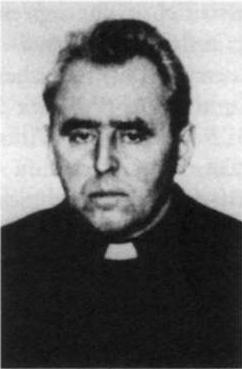 Rev. Alfonsas Svarinskas. (Photo from KGB archive) |
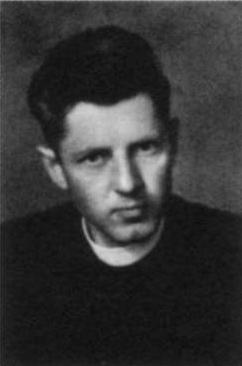 Rev. Jonas Lauriūnas SJ. |
 Rev. Pranas Račiūnas MIC. |
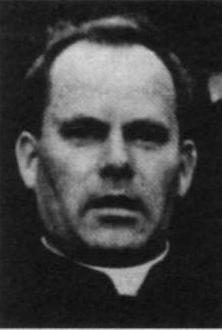 Editor of the Aušra Rev. Lionginas Kunevičius. |
 Rev. Kazimieras Ambrasas SJ |
 Vladas Lapienis. |
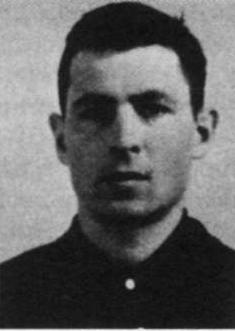 Virgilijus Jaugelis. (Photo from KGB archive) |
 Sergei Kovalev. |
 Vytautas Vaičiūnas. |
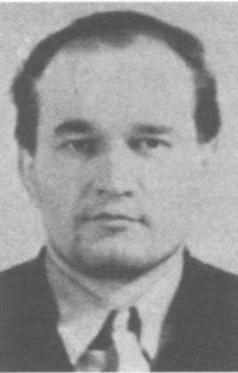 Petras Plumpa. 1973. (Photo from KGB archive) |
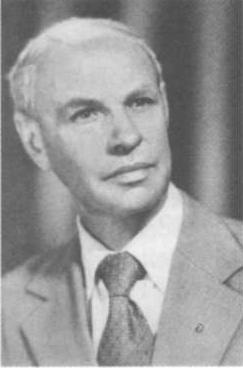 Anastazas Janulis SJ. |
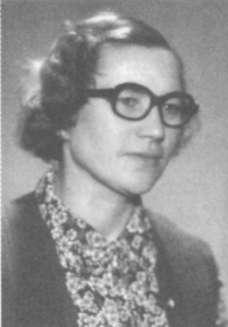 Sister Elena Šuliauskaitė. |
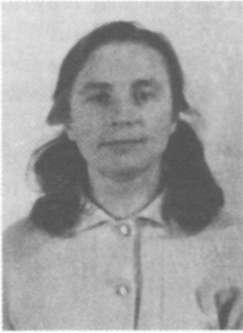 Sister Nijolė Sadūnaitė. (Photo from KGB archive) |
 Sister Birutė Briliūtė. |
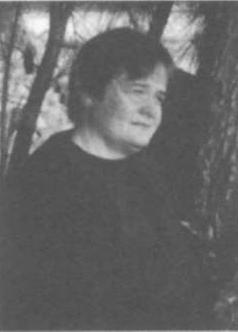 Sister Bernadeta Mališkaitė. |
 Sister Ona Šarakauskaitė. |
 Sister Virginija Kavaliauskaitė |
The Supreme Court sentenced Svarinskas on 3-6 May 1983 to 7 years in a high security camp and 3 years exile.83 Svarinskas spent a total of 22 years in Soviet camps.
The court made a separate decision to arrest Tamkevičius who was arrested in the court room (he was a witness) on 6 May 1983. Tamkevičius was also accused of slandering state policy toward the Church and believers, the state, and social order as well as urging a struggle against this order and lowering the international prestige of the USSR (by publishing the Kronika, working in the TTGKK, etc.). Sermons, a Christmas tree in a churchyard, and other accusations were only pretexts: the main purpose was to liquidate the Kronika because KGB had no doubts that he was one of its publishers. On 2 December 1983 the Supreme Court of the LSSR sentenced Tamkevičius to 6 years in a high security camp and 4 years exile.84
However, the Kronika was still published and the KGB continued its repressions. On 18 January 1985 officially for Easter procession (but really for supporting the Kronika) Matulionis was sentenced (for the second time) to three years imprisonment and Romas Žemaitis, a young man who had served in the Kybartai church, was sentenced to two years imprisonment.85
On 28 March 1985 the Supreme Court of the LSSR for the second time sentenced 79 year old Vladas Lapienis to four years in camp and two years exile for publishing and distributing the Kronika.86
There were no more judicial actions against the publishers of the Kronika because perestroyka came to the Soviet Union. However, the KGB continued to watch the suspects, to collect discrediting information about them, to conduct searches, question them, and prepare for new arrests. Sisters Elena Šuliauskaite, Nijole Sadūnaitė, Birutė Briliūtė, Bernadeta Mališkaitė, Ona Kavaliauskaitė, Ona Šarakauskaite, priests Robertas Grigas, Rokas Puzonas, Antanas Gražulis SJ, brothers Gintas and Vytautas Sakavičiai and other suspects were on 'the black list'. The last investigated (working) case. No. 09-2-008-87, concerning the Kronika was dismissed on 29 June 1988 because "due to the changing circumstances the publication lost its characterization of being dangerous to society".87
One of the first paragraphs of the secret service-strategic measures and investigation acts plan stated that after arresting a suspected publisher or assistant of the Kronika one of the first tasks for the investigator was with the help of prison ward agents to break down the
--------------
83 LYA. Criminal case No. P-14241-LI. V. 17, sh. 249-324.
84 ibid. Criminal case No. P-16557-LI. Watching case, sh. 104-123.
85 Spengla, pp. 325, 326.
86 LYA. Criminal case No. 47707/3. V. 9, sh. 1-24.
87 Ibid. C. d. 45, f. 525, sh. 329.
arrested and to make him condemn publicly his former activities. However, during the 17 years of publishing the Kronika there was not a single person who condemned his activities. This fact is worth attention because it says much about the strength of the beliefs the people who were doing this work had.
Prison ward agents were sent to everybody but except for a few small details they did not manage to find out anything more serious.
The punishment for cooperating with the Kronika was not as severe as it was in post-war times, but it was quite large for more important personalities: 3, 4, 6-8 years in high security camps followed by 3-4 years exile. One can be amazed by the strength of spirit of those who were sent to the Gulags for the second or third time.
More persons were repressed for the Kronika than for any other underground (excluding post-war times) publication in Soviet Lithuania: 22! Two of them (Vladas Lapienis and Rev. Jonas Kastytis Matulionis) were sentenced twice for the Kronika. In spite of total watching, discrediting, repressions, the Kronika survived up to Lithuania's Atgimimas (Revival): the last issue - No. 81 - is dated 19 March 1989. The reason for the survival was not only the strength of the spirit of its publishers and contributors but also the support of Lithuanians from Western countries who spread its word throughout the world.
Understanding the significant role of Catholic Lithuanians living in the West (especially in the U.S.A.) in spreading the information of the Kronika in the world and the harm done to the prestige of the USSR in the world by making known its policy concerning the rights of believers and human freedoms, the KGB of the LSSR devoted considerable effort to the fight against the Kronika and its publishers in the West. This work was carried out on several fronts.
First, the KGB diligently collected all the articles published in the press of Lithuanians in the West in which information from the Kronika was published (along with all other anti-Soviet articles published there). Moreover, the information which was published in the Kronika and later broadcast by Western radio programs was also collected and stored (acquired even from the KGB of the USSR).88 This information was analyzed and the orders were given to the KGB divisions in towns and its subdivisions in districts (where the events published in the Kronika had occurred) to investigate the 'correctness' of the facts and to refute the Western radio stations in the local and regional press. On 25 June 1978 Vatican Radio broadcast information about the events in the Lazdijai district from issues Nos. 25, 26, 30, and 33 of the Kronika, and the
---------------
88 ibid. C. d. 46, f. 1656; LGAM. LKB Kronika documents.
chief of section 5 of the KGB Colonel Edmundas Baltinas ordered the KGB subdivision of the Lazdijai district to prepare and send condemning letters to Vatican Radio and to the leaders of the Lithuanian Catholic Church after coordinating the contents of these letters with them (section 5 of the KGB).89 The order was carried out.
On 29 June 1981 Baltinas wrote another letter to the chief of the KGB subdivision of the Lazdijai district concerning the information from issues Nos. 46 and 47 of Kronika broadcast by Vatican Radio. He wrote: "letters to the Vatican have to be organized".90
The KGB tried to discredit the Kronika and Vatican radio with such letters and by accusing them of spreading slander to quiet them. These measures organized by the KGB were not successful because everybody understood who were the real organizers and writers of these letters.
Another way the KGB fought against the Kronika in the West was by attempting to discredit the publishers of the Kronika and at the same time destroy the faith in the objectivity of its information. In order to achieve these goals the KGB tried to use the people whom in its opinion the Vatican might trust: by discrediting the publishers of the Kronika, the KGB expected that the publishing of the Kronika would stop. A typical example of KGB insidiousness even reaching the Vatican can be seen by the visit of Bishop Juozas Labukas to the Vatican in 1978. Labukas described the priests Zdebskis, Svarinskas, and Jokūbauskas to the influential Lithuanian priests in Rome Ladas Tulaba, Paulius Jatulis, and Rapolas Krasauskas in such a manner that the latter were even surprised: "We considered Zdebskis, Svarinskas, and Jokubauskas to be the leaders of defending Church! But if they behave as you say, they might be serving the authorities?" Bishop Labukas answered: "Make your own judgments..." In a note attached to the agent report the KGB wrote that "Using 'Daktaras' (an agent infiltrated in the diocesan office - author) Labukas was given the task of discrediting them in the eyes of the emigrants".91
It would have been an impressive victory for the KGB over the Vatican and all the supporters of the TTGKK and the Kronika if after carrying out the special measure against Zdebskis - by chemically scorching him - the KGB had managed to fabricate (to enter in official medical records) that he was suffering from venereal disease. They would have then been able to proclaim: "Such immoral priests publish the Kronika and you trust it!" That would have been a strong blow because it would not have been easy to prove the truth.
-----------
89 LYA. C. d. 45, f. 503, sh. 153, 154, 159.
90 ibid. Sh. 275
91 ibid. F. 499, sh. 24. Strategic report of agent 'Daktaras', 19 June 1978.
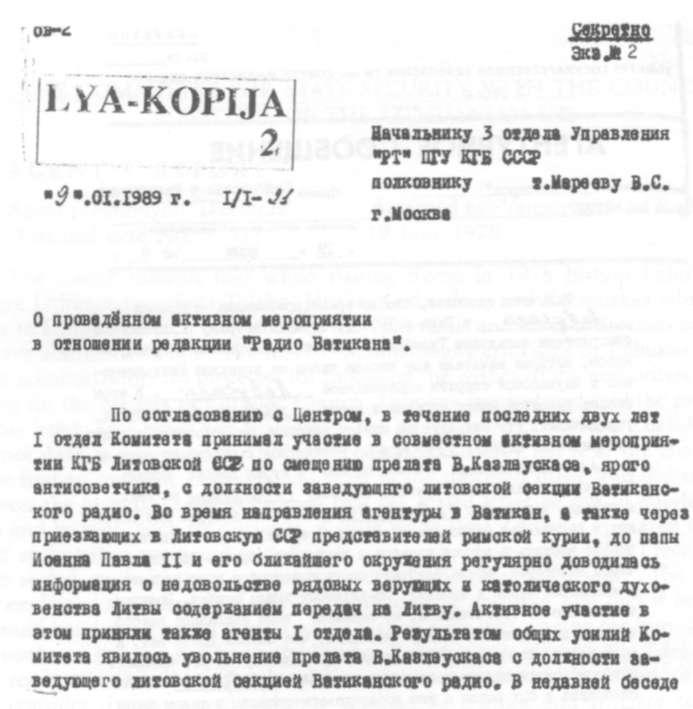
No. of copy 2
09 01 1989 1/1-21 To chairman of section 3 of Office PGU ,RT'
of USSR KGB colonel comrade V. S. Mareyev
Moscow
On the active measure carried out
concerning the editorial staff of 'Vatican Radio'
After coordination with the Center, during the last two years section 1 of the Committee participated in carrying out the joint active measure of the Lithuanian SSR KGB to dismiss the fierce anti-Soviet prelate V. Kazlauskas from the post of the head of the Lithuanian section of Vatican Radio. By sending agents to the Vatican as well as using the representatives of Rome's curia who came to the Lithuanian SSR, a constant flow of information was presented to Pope John Paul II and his immediate advisors about the dissatisfaction of ordinary believers and Catholic priests of Lithuania in the contents of the programs for Lithuania. Agents from section 1 took an active part in this work. By the joint efforts of the Committee prelate V. Kazlauskas was dismissed from the post of the head of the Lithuanian section of Vatican Radio. <...>
Facsimile of the report of section 1 of KGB of Lithuanian SSR to the Center (KGB of the USSR) concerning the dismissal of Msgr. V. Kazlauskas from his work in Vatican Radio. (LYA. F.K-1, Case of doc. 49, f. 233, sh. 99)
No. of copy
MINISTERS OF THE LITHUANIAN SSR
Section 5
AGENT'S REPORT
Agent pseudonym: 'Daktaras' Accepted by: Vaigauskas and Radzevičius
Personal case No. 21937 19 June 1978
The source informs that while visiting Rome in 1978 Bishop Labukas met emigre Lithuanians priests Tulaba, Jatulis, Kazlauskas, and Krasauskas who read a letter to Labukas, which the priests of the Vilkaviškis and Kaunas dioceses were said to have addressed to him. The letter contained many criticisms of Labukas and the other administrators (of dioceses) for following the wishes of the authorities and not caring for the matters of Catholic Church. Labukas laughed and told the prehistory of this letter. This letter was brought to the diocesan office by Rev. Zdebskis, who did not dare to give it to the bishop personally and only left it at the chancellery. After finding out that Zdebskis had been in the diocesan office and did not want to meet the bishop, Labukas ordered that the sealed letter be put in another envelope and be sent back to Zdebskis. A little while later Zdebskis appeared with this letter at the office again and said: "There was probably some mistake. I received this letter sealed, probably sent by you instead of some other document." The chancellors explained that there had not been any mistake and told him that if he desired he could hand the letter in person to the bishop who was waiting for him. Zdebskis got confused but did not go to the bishop. Labukas was waiting for Zdebskis and was ready to talk to him like this: "You are concerned with the affairs of bishops and consider if they are suitable for working as bishops and you are concerned about the affairs of the whole Catholic Church. But what have you done in your parish? There are many complaints lodged against you on the grounds that the believers of your parish are forced to appeal to the priests from other parishes for religious services because you are rarely at home. It is known that your son wants to enter the theological seminary. What is going to happen if after a while he enters the theological seminary and we shall have to appoint your son as a vicar in the same parish with you?
What will the people say then? Won't you then be bringing shame on the whole Church? So, sit and do what you have to do." The source added further that such priests make a lot of noise but are not decent themselves.
Moreover, Labukas told Tulaba and the others present about the speech Rev. Svarinskas made at the funeral of Rev. Aleksa in Tabariškiai in the presence of Bishop Povilonis in which Labukas was groundlessly criticized. The emigres Tulaba, Jatulis, and Krasauskas were greatly surprised that priests would act so tactlessly with their spiritual leaders. Emigre Kazlauskas said: "We considered Zdebskis, Svarinskas, and Jokubauskas to be among the most knowledgeable in church matters, but if they behave in this way, aren't they serving the authorities?" Labukas answered: "Make your own decisions..."
Note: Zdebskis, Svarinskas, and Jokubauskas are extremist priests. Labukas was given the task from agent ,Daktaras' to discredit them in the eyes of emigres.
Council of Ministers of Lithuanian SSR Major Radzevičius
(LYA. F. K-l, C. d. 45, f. 499, sh. 23)
Using its emissaries abroad - the KGB had them among local Lithuanians (as shown by KGB documents) - the KGB tried to sow distrust in the Kronika and to suppress its local supporters and distributors. During a Lithuanian meeting in the U.S.A local Lithuanian intellectuals came up to Rev. Kazimieras Kuzminskas, the chairman of the Lithuanian Union of the Chronicle which published volumes of the Kronika, and asked sarcastically: "Is it really true, dear priest, that people in Lithuania are so unhappy?"92 The KGB tentacles reached further than just the direct publishers and distributors of the Kronika in Lithuania whom the KGB with the help of its agents and letters by 'a group of priests' accused of splitting the Church, slander, disobeying their hier-archs, lack of love, and other sins. The KGB reached beyond the USSR border. Local 'intellectuals' influenced by KGB emissaries could consciously or subconsciously carry out KGB tasks: to discredit the publishers of the Kronika, its translators and especially the leaders of Union of the Chronicle and thus suppress the voice of the Kronika.
Not all the attempts of the KGB were in vain. For diplomatic reasons the editors of the Lithuanian program of Vatican Radio could not announce the information of the Kronika directly, but only from the foreign press and finally in 1988, not without the efforts of the KGB of the LSSR, the chief editor of this office for many years, 'ardent anti-Soviet' Msgr. Vytautas Kazlauskas was dismissed.93
As was mentioned earlier, 22 people in Lithuania were sentenced for assisting the publication of the Kronika (however some of them were charged with other 'crimes'). They received sentences totaling 79 years (54 years imprisonment in high security camps) and 20 years exile. Knowing the inhuman conditions of imprisonment in Soviet camps we can understand the greatness of the sacrifice these people made for the Church and Nation. The contribution of the countrymen taken by the storms of war to the West cannot be underestimated because they also assisted with prayers and work at times even taking risks so that the voice of the Kronika would be heard in the world and that Lithuania and its Church would be free again. Glory and gratitude to them!
--------------
92 Arvydas Žygas, "LKB Kronikos pamokos" [Lessons of the LKB Chronicle], Naujasis dienovidis, No. 13, 27 March - 3 April 1992.
93 LYA. F. K-l, C. d. 49, f. 233, sh. 99.








